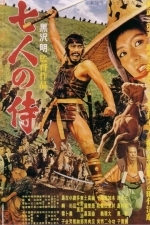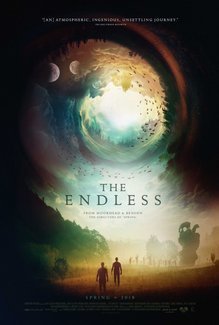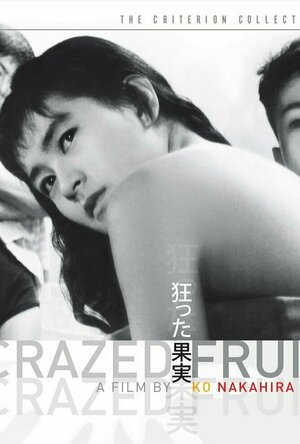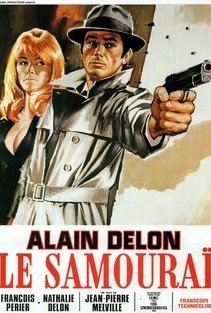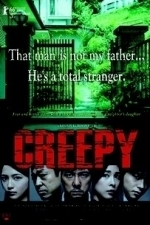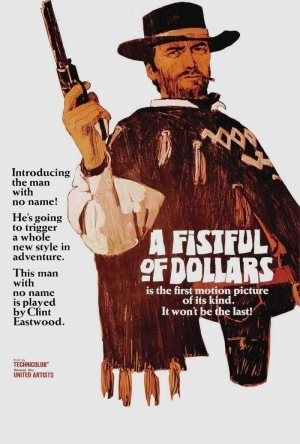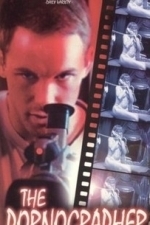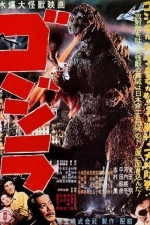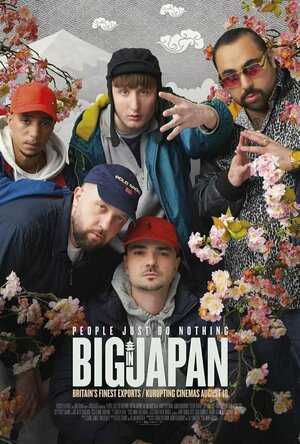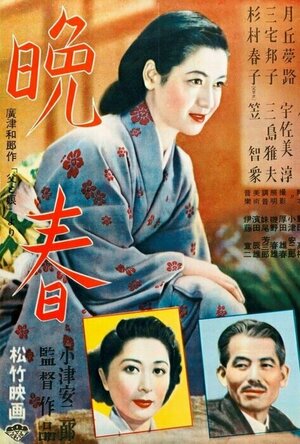Search
Search results
Ricky Jay recommended Seven Samurai (1954) in Movies (curated)
James Koppert (2698 KP) rated The Endless (2018) in Movies
Dec 23, 2019
Peter Cowie recommended Crazed Fruit (1956) in Movies (curated)
Edgar Wright recommended Le samouraï (1967) in Movies (curated)
Suswatibasu (1701 KP) rated Creepy (Kuripi: Itsuwari no rinjin) (2016) in Movies
Nov 29, 2017 (Updated Nov 29, 2017)
The title spells it out to a tee
This absolutely stomach-wrenching film from the masters of Japanese cinema, literally blows your socks off. It is understatedly creepy, no dramatic background music and a deeply horrifying body count. For fans of psychological thrillers such as @Sympathy for Lady Vengeance (2014) and @Oldboy (2013) (Korean version) this is another expertly crafted movie that leaves you in knots.
It begins with a detective interviewing a psychopathic suspect, who then manages to escape the police interview room and hold a woman hostage. In the process, the detective is badly injured and as a result leaves the force to pursue an academic career in criminal psychology. Shaken by his time as a detective, he and his wife move to a leafy suburb of Japan with incredibly unsocial neighbours. Soon after moving, he is approached by a former colleague asking for help in a particular case, in which three members of a family mysteriously disappeared six years ago, leaving only a daughter behind. The case was never solved as the daughter's constantly changing statements were seen as inadmissible evidence. And soon after he realises that the case is much closer to home than expected.
Sharp storytelling despite a few plot holes which is left to your imagination. Totally recommended for followers of Eastern cinema.
It begins with a detective interviewing a psychopathic suspect, who then manages to escape the police interview room and hold a woman hostage. In the process, the detective is badly injured and as a result leaves the force to pursue an academic career in criminal psychology. Shaken by his time as a detective, he and his wife move to a leafy suburb of Japan with incredibly unsocial neighbours. Soon after moving, he is approached by a former colleague asking for help in a particular case, in which three members of a family mysteriously disappeared six years ago, leaving only a daughter behind. The case was never solved as the daughter's constantly changing statements were seen as inadmissible evidence. And soon after he realises that the case is much closer to home than expected.
Sharp storytelling despite a few plot holes which is left to your imagination. Totally recommended for followers of Eastern cinema.
Awix (3310 KP) rated Fistful of Dollars (1964) in Movies
Jun 12, 2018 (Updated Oct 22, 2018)
Genre-defining spaghetti western is an Italian-made interpretation of a quintessentially American genre, filmed in Spain and based on a Japanese movie (so stop going on about how much you hate globalisation). Taciturn stranger moseys into a divided town south of the border, decides to make some quick money by playing the two ruling gangs off against one another. Cue many trumpet solos and Clint Eastwood gunning folk down like it's going out of fashion.
Not quite up to the same standards as the film that inspired it, Yojimbo, but still a really impressive film in the way it combines Leone's visual style, Eastwood's inscrutable charisma and Morricone's operatic score. The focus is so visual that the film ends up coming across as slightly superficial and overly interested in violence and sadism, but it is still a classic of its kind and really a landmark in both US and European cinema.
Not quite up to the same standards as the film that inspired it, Yojimbo, but still a really impressive film in the way it combines Leone's visual style, Eastwood's inscrutable charisma and Morricone's operatic score. The focus is so visual that the film ends up coming across as slightly superficial and overly interested in violence and sadism, but it is still a classic of its kind and really a landmark in both US and European cinema.
Jean-Pierre Gorin recommended The Pornographer (1999) in Movies (curated)
RəX Regent (349 KP) rated Godzilla (1954) in Movies
Feb 25, 2019
The beginning was inspired...
Contains spoilers, click to show
I was first introduced to Godzilla in cartoon form in the 1980′s as a child, but it wasn't until 1998, with Roland Emmerich's blockbuster reboot that I had seen the infamous beast on the pearl screen. I had also seem bits and bobs of the many original sequels as a child and they had made absolutely no impact on me what so ever! But I became aware of the significance of this, the original, only recently and it was due to this discovery that I hunted down the best copy available.
I ended up with the 2005 Region 1 release, which also includes the U.S. reworking from 1956, Godzilla: King Of The Monsters!. I could not have imagined that a the 1954 version of Godzilla, or more literally, Gojira, could have been so mature, so sombre, or so tempered with its sledgehammer philosophising. Produced just nine years after the devastating nuclear bombings of Hiroshima and Nagasaki, which effectively ended the Second World War, Gojira takes up the mantle on doing what Science Fiction does best, and created the cypher in the form of Godzilla, to represent the devastation left over from the nuking of these cities.
Godzilla is a nuclear beast, affected by U.S. nuclear tests and is now toxically radioactive and upon landfall on Tokyo, rains down, literally, nuclear destruction up on the city, in a manner not dissimilar too that levied upon either of the cities, Hiroshima or Nagasaki. But its not just about that. It about the creation of the next WMD which would ultimately be used against Godzilla but poses and moral dilemma that Robert Oppenheimer himself would appreciate, as to whether such a creation should be allowed to be developed. It also looks quite seriously into establishing the potential evolution of a creature such as Godzilla and uses plausible palaeontological arguments to justify his existence.
The pacing was good and though Godzilla strikes from almost the opening frame, there is a sense of an ongoing crisis rather than an impending apocalypse, with news outlets reporting throughout as plans, both military and civilian are sited.
All in all, this is not just the birth of the massive and largely corny and cheap Godzilla series, it is a striking, intelligent, moving and incredibly well judged masterpiece of 50′s cinema. But I should have known. Most rubbish franchises began with an inspired first movie, something to break the mould and this does the job perfectly.
But it isn't without its flaws. The special effects, though not all bad, are below par even for the time, but effective as for telling the story, some were very good with ALL being well conceived and ambitious. Some were very poor though, such as the model ships, which were unnecessarily below the standards and look like bath toys. But the cinematography was wonderful, with Honda shooting this in a classically manner. Tension was built brilliantly and the action rose to several crescendos and the excellent score by Akira Ifukube was not overused but brought to perfect effect when needed.
The acting was first-rate as well, proving Japanese cinemas reputation. But this was my first real foray into Japanese cinema, and what a treat it was. Many would look at this and see a cheap old film and others will see a film that whist let down by some less that brilliant visual effects and the fact that a lot of people, certainly in the U.K. find subtitles difficult, as a masterpiece not only of Eastern cinema but of cinema full stop. Truly realising its narrative and spirit, its cause and message. This was about a county in mourning not only for the hundreds of thousands lost by Fat Man and Little Boy, but for the war full stop. The 1950′s were a time of great political fear and reconstruction after WW2, and this is a film which taps into the brewing Cold War and fear of annihilation from human behemoths which once released can never be returned.
HIGHLY recommended but not for children as they will bore, miss the point, get put off by the subtitles, black and white and quite frankly its a mature and bleak film and not the 1998 remake. And thank God or Godzilla for that!
I ended up with the 2005 Region 1 release, which also includes the U.S. reworking from 1956, Godzilla: King Of The Monsters!. I could not have imagined that a the 1954 version of Godzilla, or more literally, Gojira, could have been so mature, so sombre, or so tempered with its sledgehammer philosophising. Produced just nine years after the devastating nuclear bombings of Hiroshima and Nagasaki, which effectively ended the Second World War, Gojira takes up the mantle on doing what Science Fiction does best, and created the cypher in the form of Godzilla, to represent the devastation left over from the nuking of these cities.
Godzilla is a nuclear beast, affected by U.S. nuclear tests and is now toxically radioactive and upon landfall on Tokyo, rains down, literally, nuclear destruction up on the city, in a manner not dissimilar too that levied upon either of the cities, Hiroshima or Nagasaki. But its not just about that. It about the creation of the next WMD which would ultimately be used against Godzilla but poses and moral dilemma that Robert Oppenheimer himself would appreciate, as to whether such a creation should be allowed to be developed. It also looks quite seriously into establishing the potential evolution of a creature such as Godzilla and uses plausible palaeontological arguments to justify his existence.
The pacing was good and though Godzilla strikes from almost the opening frame, there is a sense of an ongoing crisis rather than an impending apocalypse, with news outlets reporting throughout as plans, both military and civilian are sited.
All in all, this is not just the birth of the massive and largely corny and cheap Godzilla series, it is a striking, intelligent, moving and incredibly well judged masterpiece of 50′s cinema. But I should have known. Most rubbish franchises began with an inspired first movie, something to break the mould and this does the job perfectly.
But it isn't without its flaws. The special effects, though not all bad, are below par even for the time, but effective as for telling the story, some were very good with ALL being well conceived and ambitious. Some were very poor though, such as the model ships, which were unnecessarily below the standards and look like bath toys. But the cinematography was wonderful, with Honda shooting this in a classically manner. Tension was built brilliantly and the action rose to several crescendos and the excellent score by Akira Ifukube was not overused but brought to perfect effect when needed.
The acting was first-rate as well, proving Japanese cinemas reputation. But this was my first real foray into Japanese cinema, and what a treat it was. Many would look at this and see a cheap old film and others will see a film that whist let down by some less that brilliant visual effects and the fact that a lot of people, certainly in the U.K. find subtitles difficult, as a masterpiece not only of Eastern cinema but of cinema full stop. Truly realising its narrative and spirit, its cause and message. This was about a county in mourning not only for the hundreds of thousands lost by Fat Man and Little Boy, but for the war full stop. The 1950′s were a time of great political fear and reconstruction after WW2, and this is a film which taps into the brewing Cold War and fear of annihilation from human behemoths which once released can never be returned.
HIGHLY recommended but not for children as they will bore, miss the point, get put off by the subtitles, black and white and quite frankly its a mature and bleak film and not the 1998 remake. And thank God or Godzilla for that!
Bob Mann (459 KP) rated People Just Do Nothing: Big in Japan (2021) in Movies
Aug 20, 2021
Good jokes, most of which land (1 more)
Enough David Brent/Partridge moments to make you cringe
As a PJDN virgin, I still laughed a lot!
It’s brave then that such a relatively niche UK TV show should have a go at ‘jumping the shark’ onto the big screen. Would fans like it? And, just as importantly, would newcomers to the characters, like me, be able to enjoy the film as a standalone entity? The answer to the last question is a qualified “yes”.
Positives:
- It well-surpasses the “6 laugh test” for a comedy. There are some scenes that I found extremely funny, with others that rated highly for me on the David Brent / Alan Partridge scale of cringiness.
- I’ve seen comment that the story is "silly" and “unbelievable”. But having experienced the crazy clash between English and Japanese culture first hand, it strikes me as very true to form! The way in which the Japanese music execs try to stylise the ground as a ‘boy band’ (“Bang Boys”!), which Grindah greedily goes along with, is a nice satire on the music industry asserting its brand over musician’s art.
- A subplot of a love story beween the inept Steves and the cute Japanese translator Ishika (Ayumi Itô) is nicely done and strangely touching.
- The good news is that you don’t need any previous experience of the characters to get fun out of the movie: you can jump right in. That being said though, I’m sure fans of the series will get more out of this than I did.
Negatives:
- While the ending was uplifting, I was itching to know what fallout (or success?) there was from the event we witnessed. Perhaps if its a box office success (unlikely I think!) then there will be a sequel.
Summary Thoughts on “People Just Do Nothing: Big in Japan”: IMDB is littered with disastrous reviews of British TV shows that have tried and failed to make the leap from the small screen to the big screen. “On the Buses”; “Are You Being Served?”; “Steptoe and Son”; “Please Sir”; “Love Thy Neighbour” – the list is endless. They are mostly all horribly unfunny. Even the great “Morecambe and Wise”, although showing occasional moments of brilliance, struggled to fully land any of their three big-screen outings.
The ‘go-to’ of many of these efforts was to “go abroad”: take the well-loved characters and put them into a ‘bigger’ and stranger pool. So “People Just Do Nothing: Big in Japan” was following a well-trodden path here. It’s a tribute to the team and their TV-series director Jack Clough, in his feature debut, that they pretty much pull it off.
I’d like to agree with Kevin Maher of “The Times” that the movie is full of “Japanese stereotypes… drunken businessmen, passive giggling women etc”. But having travelled extensively on business in Japan, it seems pretty close to the mark with its observations to me! More importantly, the film never seems to be particularly derogatory or disrespectful of the culture. For example, they take their shoes off too much!
Key to its box office success will be whether or not it can attract an audience outside of its niche TV fan-bases. As a member of that sub-group, I really wasn’t expecting to enjoy this one, but I actually did. It was good fun, and if you want a good laugh at the cinema – a pretty rare thing – then I’d recommend this one, even if – like me – you haven’t seen the original TV show.
(For the full graphical review, please check out onemannsmovies on the web, Facebook and Tiktok. Thanks!)
Positives:
- It well-surpasses the “6 laugh test” for a comedy. There are some scenes that I found extremely funny, with others that rated highly for me on the David Brent / Alan Partridge scale of cringiness.
- I’ve seen comment that the story is "silly" and “unbelievable”. But having experienced the crazy clash between English and Japanese culture first hand, it strikes me as very true to form! The way in which the Japanese music execs try to stylise the ground as a ‘boy band’ (“Bang Boys”!), which Grindah greedily goes along with, is a nice satire on the music industry asserting its brand over musician’s art.
- A subplot of a love story beween the inept Steves and the cute Japanese translator Ishika (Ayumi Itô) is nicely done and strangely touching.
- The good news is that you don’t need any previous experience of the characters to get fun out of the movie: you can jump right in. That being said though, I’m sure fans of the series will get more out of this than I did.
Negatives:
- While the ending was uplifting, I was itching to know what fallout (or success?) there was from the event we witnessed. Perhaps if its a box office success (unlikely I think!) then there will be a sequel.
Summary Thoughts on “People Just Do Nothing: Big in Japan”: IMDB is littered with disastrous reviews of British TV shows that have tried and failed to make the leap from the small screen to the big screen. “On the Buses”; “Are You Being Served?”; “Steptoe and Son”; “Please Sir”; “Love Thy Neighbour” – the list is endless. They are mostly all horribly unfunny. Even the great “Morecambe and Wise”, although showing occasional moments of brilliance, struggled to fully land any of their three big-screen outings.
The ‘go-to’ of many of these efforts was to “go abroad”: take the well-loved characters and put them into a ‘bigger’ and stranger pool. So “People Just Do Nothing: Big in Japan” was following a well-trodden path here. It’s a tribute to the team and their TV-series director Jack Clough, in his feature debut, that they pretty much pull it off.
I’d like to agree with Kevin Maher of “The Times” that the movie is full of “Japanese stereotypes… drunken businessmen, passive giggling women etc”. But having travelled extensively on business in Japan, it seems pretty close to the mark with its observations to me! More importantly, the film never seems to be particularly derogatory or disrespectful of the culture. For example, they take their shoes off too much!
Key to its box office success will be whether or not it can attract an audience outside of its niche TV fan-bases. As a member of that sub-group, I really wasn’t expecting to enjoy this one, but I actually did. It was good fun, and if you want a good laugh at the cinema – a pretty rare thing – then I’d recommend this one, even if – like me – you haven’t seen the original TV show.
(For the full graphical review, please check out onemannsmovies on the web, Facebook and Tiktok. Thanks!)
Kirk Bage (1775 KP) rated Late Spring (1949) in Movies
Jan 28, 2021
As elegant, patient, polite and deliberately still as a side of civilised Japanese life that existed both at the time and for decades before and after. Difficult for our modern western sensibilities to readjust to. It is just so slow and seemingly eventless. It concerns the life of 27 year old Noriko, played by Ozu’s muse Setsuko Hara, with whom he made many of his best loved films. She is constantly hassled by family members and friends to get married, but is much more concerned by her relationship with her sick father, who she is content to care for. The more she is pushed the more her polite smile becomes a rictus of hidden sadness and anxiety. Small meetings, quiet words and subtle gestures take on larger meanings, and the story becomes more tragic the more you engage with Hara’s lovely performance.
I did find it hard to relate to, and couldn’t quite find the stillness within myself to just go with it. Its pace made me jittery to do something more exciting, and it wasn’t quite as transcendingly beautiful as I’d been led to believe. Saying that, I appreciated the skill of Ozu’s camera work, in framing and capturing delicate scenes and moments. I also learned the phrase “tatami cam”, which describes the low angle he often uses to demonstrate humility and respect. A gentle tale with great resonance regarding our responsibilities to others and our own repressed desires. Most interesting in how it contrasts with western cinema of the same time.
I did find it hard to relate to, and couldn’t quite find the stillness within myself to just go with it. Its pace made me jittery to do something more exciting, and it wasn’t quite as transcendingly beautiful as I’d been led to believe. Saying that, I appreciated the skill of Ozu’s camera work, in framing and capturing delicate scenes and moments. I also learned the phrase “tatami cam”, which describes the low angle he often uses to demonstrate humility and respect. A gentle tale with great resonance regarding our responsibilities to others and our own repressed desires. Most interesting in how it contrasts with western cinema of the same time.
